We all have gaps in our pop culture knowledge, those omissions that elicit gasps from our fellow funnybook connoisseurs. For me, those gaps are vast and constitute anything outside of DC Comics proper. I’m on a mission to rectify my comics knowledge shortcomings and to provide a fresh take on classic stories that others have known for years. The comics may be old but my mind is still fresh, wrapped in plastic and sitting on the shelf, waiting to be opened. Welcome to Mint Condition!
This time: Let’s get international and talk about the English translation of a French re-visioning of a classic American novel set in futuristic space.
BACKGROUND
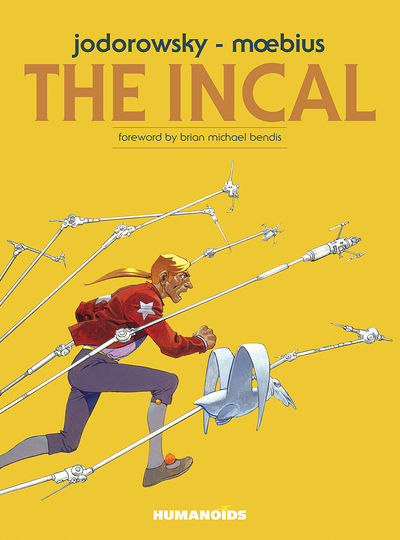
In a nutshell, the documentary centers around the Chilean-French filmmaker Alejandro Jodorowsky laying out his grand vision to make a movie out of Frank Herbert’s Dune back in 1975. Jodorowsky had hired a small team of artists like the French cartoonist Mœbius and Swiss painter H.R. Giger to begin designing the sets and costumes and to lay out the scenes according to his over-imaginative interpretation of the source work. He commissioned British sci-fi cover artist Chris Foss to design the huge starships that would carry the viewer across galaxies using groundbreaking visual techniques. Jodorowsky swung for the fences on the entire project, assembling an implausible cast that included big names like Mick Jagger and Salvador Dalí. His ideas were spiritual, psychedelic, lurid, and absolutely nothing like the book that it was supposedly adapting. The anticipated runtime of the movie expanded until it was more than ten hours. In the end, funding dried up during pre-production as studios were reluctant to take on the project. The entire film was scrapped, the movie rights were sold, and this iteration of Dune got only as far as a giant stack of intricate storyboards.
Those storyboards became The Incal.
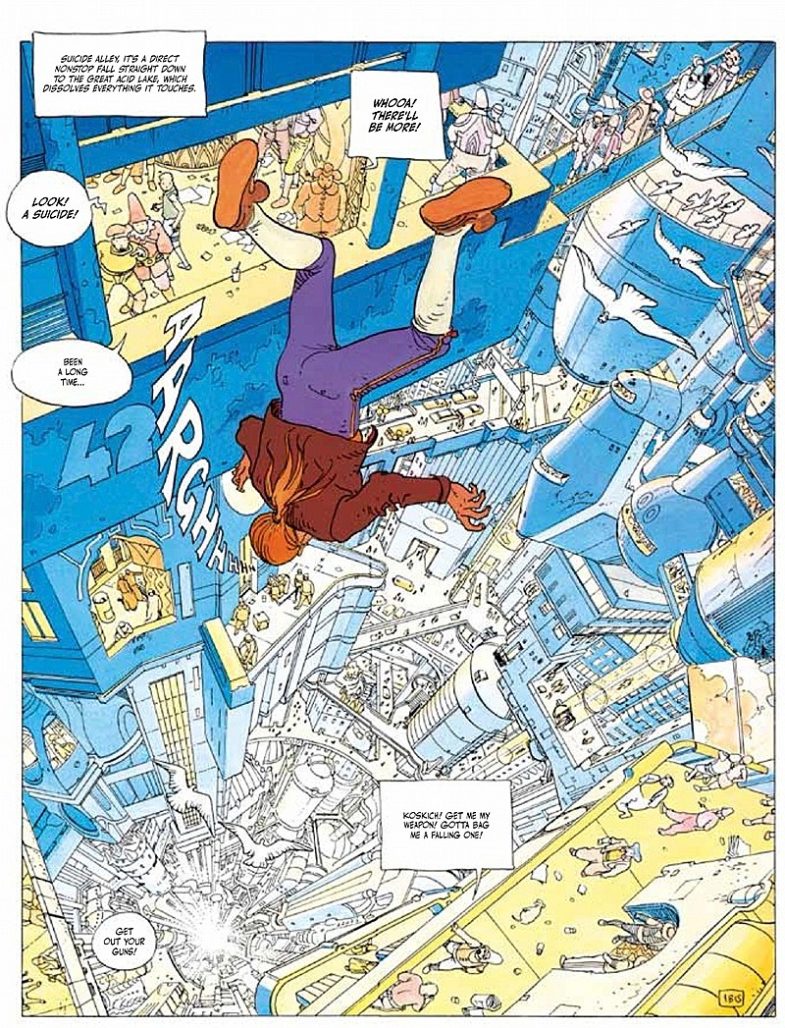
As regular readers of this column know, I am thorough to the point of self-punishment, so in preparation for this review I also read the prequel collection Before the Incal and the sequel collection Final Incal. You know, for context. I’ll forego adding my thoughts about these (vastly different) tangential books and instead use this article to just focus on the O.G., but know that all three volumes are highly entertaining.
Published by: The story was originally released serially in a French anthology comic called Métal Hurlant, from 1980-1988 by publishing house Les Humanoïdes Associés. Modern English collections are now published by a sister company, Humanoids Publishing.
Publication Dates: The Incal (1980-1988), Before the Incal (1988-1985), Final Incal (2008-2014).
Creators: Alejandro Jodorowsky and Jean Giraud (better known as Mœbius), with coloring by Yves Chaland, Isabelle Beaumeney-Joannet, and Zoran Janjetov.
My previous experience: A month ago, I didn’t know this book existed. Realizing that I’m a huge Dune fan (The spice must flow!), my fine colleagues here at The Beat suggested that I give it a spin for this month’s column. So I started with the documentary film and dove right in.
FIRST IMPRESSIONS
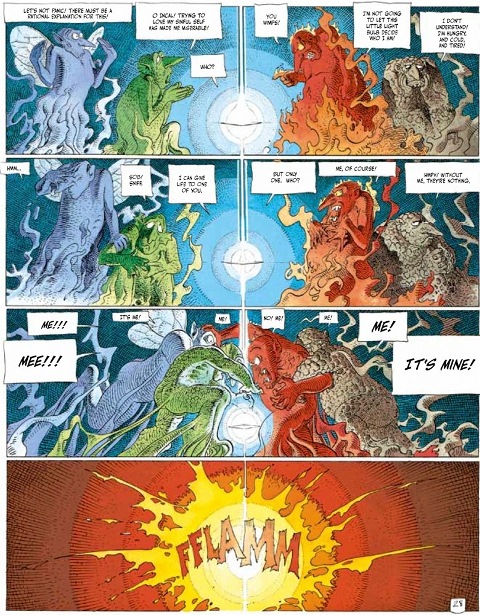
Beyond the issue of…we’ll call it “well-intentioned homage”…there’s a more profound familiarity in the pages of The Incal. It’s a deeply spiritual work that (at least in this reader) plucks at the heartstrings of inborn religious and mythological truths. While Jodorowsky might come across as an unhinged absurdist in the documentary, this story is very carefully crafted to touch something primal and utterly human. A casual read will reward you with explosive action, gratuitous nudity, and hilarious hijinks, but approaching with full and clear-minded attention will reveal deeper treasures.
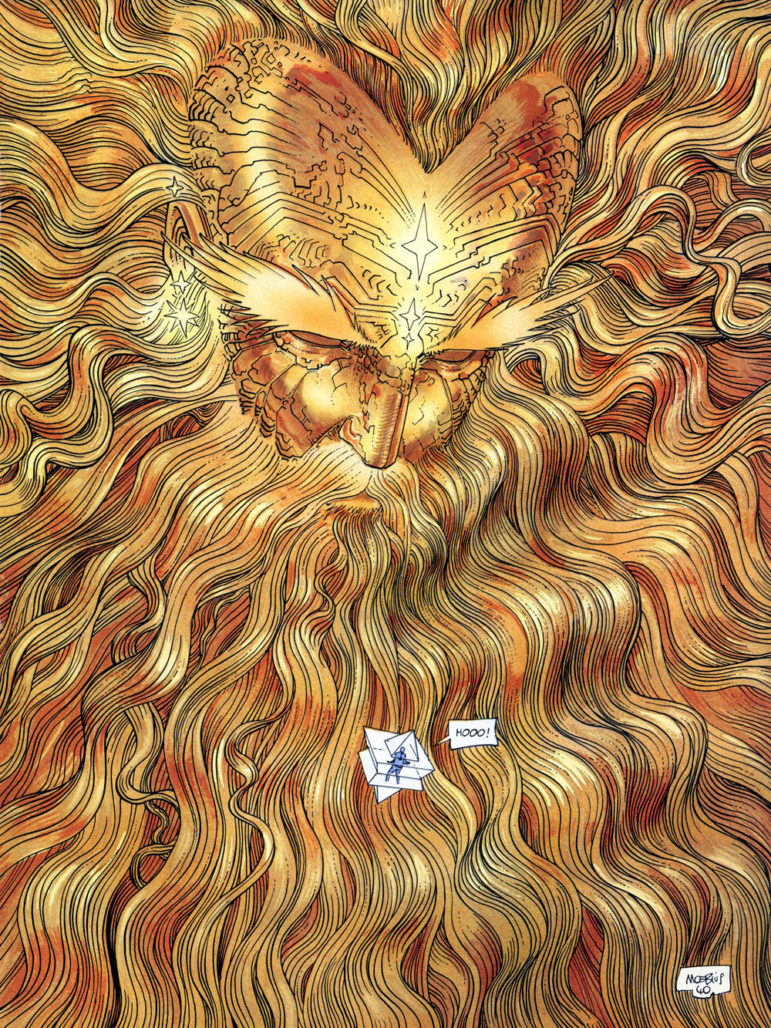
The caption boxes have thick margins of whitespace surrounding the text that seem downright wasteful, and I kept reading them in the incorrect order. Maybe it’s some difference between American comics and French, but my eye was continually traveling the wrong path across the page, which forced me to reverse-engineer the correct sequence of actions or conversations.
All of this to say that it took my American mind some time to adjust to The Incal. These are just observations — I don’t mean to present them as flaws. In fact there’s a real charm to reading such a unique work. Over time I either stopped noticing these quirks or started to really enjoy them. My mind adopted a more freeform style of reading and began to scan the page loosely without worrying too much about it. I began to appreciate the bombastic, tongue-in-cheek spectacle of it all. There’s nothing quite as satisfying as a serious work that doesn’t take itself seriously.
What’s helpful is the style that Mœbius infuses into the space opera, with strategic use of colors and textures to draw the eye and emphasize what’s important. The mostly muted, neutral palette uses naturally occurring “earthy” colors except on certain characters who are out of their element, so to speak. It’s almost as if the bright pops of color scream out that the interlopers don’t belong and aren’t part of this world. Small, repetitive tickmarks form hatching patterns on hair, clothing, and rocks throughout the book to add further directional visual elements. It’s a beautiful book and I kept finding myself being lulled into a state of pleasant euphoria as my unfocused eyes took in each page.
Then I started really paying attention to the story.
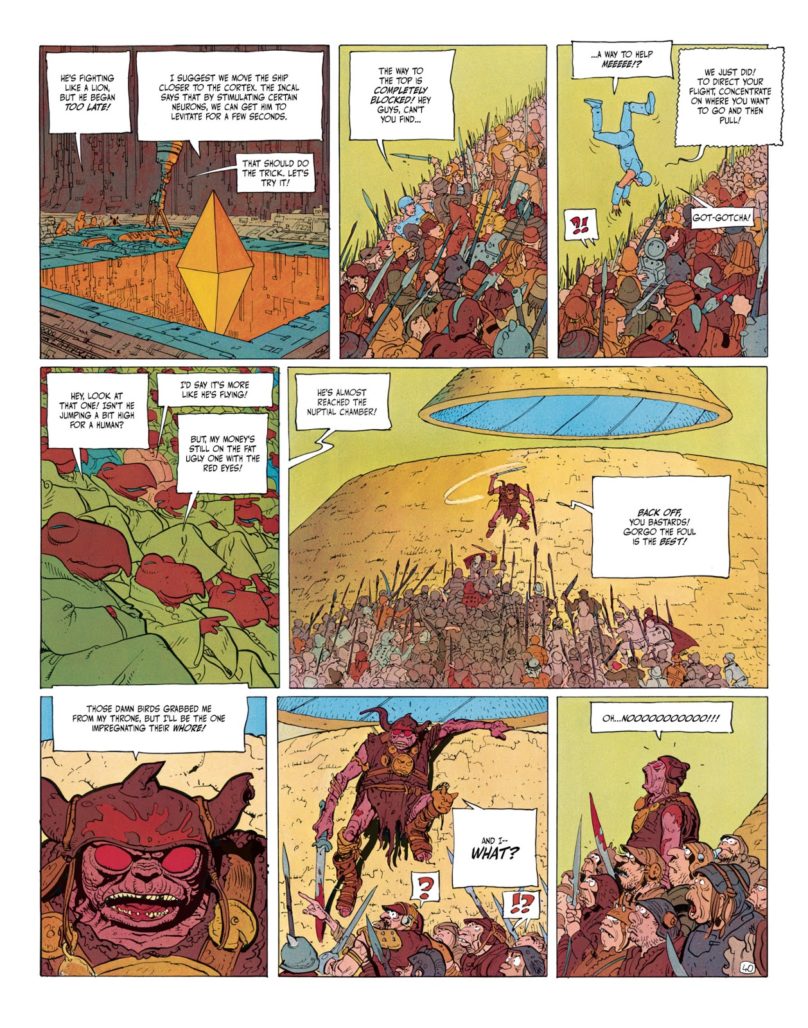
Instead of a single main antagonist, the political landscape of The Incal is filled with groups and individuals with competing agendas. There are the hyper-wealthy Aristos who enjoy the highest standards of living on the uppermost levels of the planet Terra 2014’s deep concrete city-shaft. When the Aristos get the itch for some debaucherous R&R they travel all the way down to the lowest level of the shaft, where the desperate poor will cater to every base hedonistic desire in the hopes of scoring a few meager coins and resisting the urge to commit suicide. The leader of the human capital planet, the Prezident, regularly transfers his consciousness into different bodies, giving off the impression of change without ever actually upsetting the status quo. There’s a technocratic cult of religious fanatics led by the Technopope, a rebel group of mercenary warriors who dwell in the garbage heaps underneath the city, and the androgynous Emperoress with his/her galactic imperial fleet. And that’s just scratching the surface.
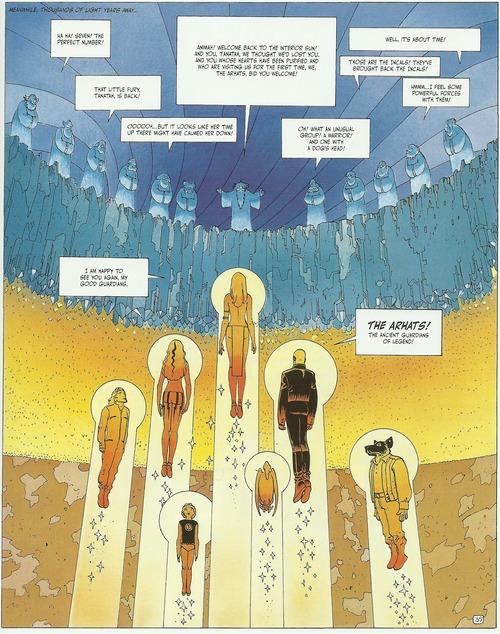
Helping John with his quest are a motley crew of outcasts. A trained assassin, a dog-headed mutant, a topless goddess, a talking seagull. Together this team evades the Prezident’s new lumbering mechanical robotic body to reach an interdimensional nexus point where they can join the light and dark Incals to form a subspace starship and travel to the galactic core. No, wait — there’s more! A lot more. John is volunteered to participate in the nuptial games that take place every five thousand years, where warriors from throughout the galaxy storm the sacred pyramid in a fight to the death to be the one to mate with the holy protoqueen. The mating goes marvelously, but upon seeing that John is unfaithful and impure in his thoughts (ugh, that’s so John), the protoqueen disintegrates him. Don’t worry, the Incal regenerates his body two pages later.
Obviously I don’t expect readers to follow any of that madness. It’s just an illustration of the sheer volume of high concepts and unhinged mania that makes this collection so delightful. If you can suspend your rational mind and just hold on for the ride, The Incal delivers a lightning fast barrage of pure uncut creativity. It’s not like anything you’ve experienced before, and the ending is guaranteed to hurt your brain. Like, in a good way.
VERDICT
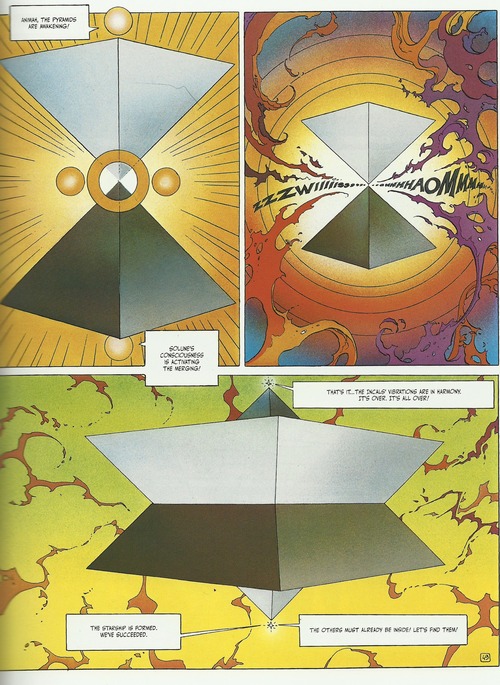
Desire to read more: There is actually quite a bit more to read in the setting of this multiverse. While Before the Incal and Final Incal round out the main series, there are also spin-offs that follow different supporting characters and fill in lots of historical/cultural backstory. For my part, I probably won’t read any further for now. The three books that I already have are infinitely re-readable and I probably will never get tired of them. Maybe the next time I read them, John DiFool will do something heroic!
Final Thoughts: With anticipation mounting for the upcoming Dune movie by French Canadian director Denis Villeneuve, now is the perfect time to look back at what might have been.
Want more? Check out the full column archive here!


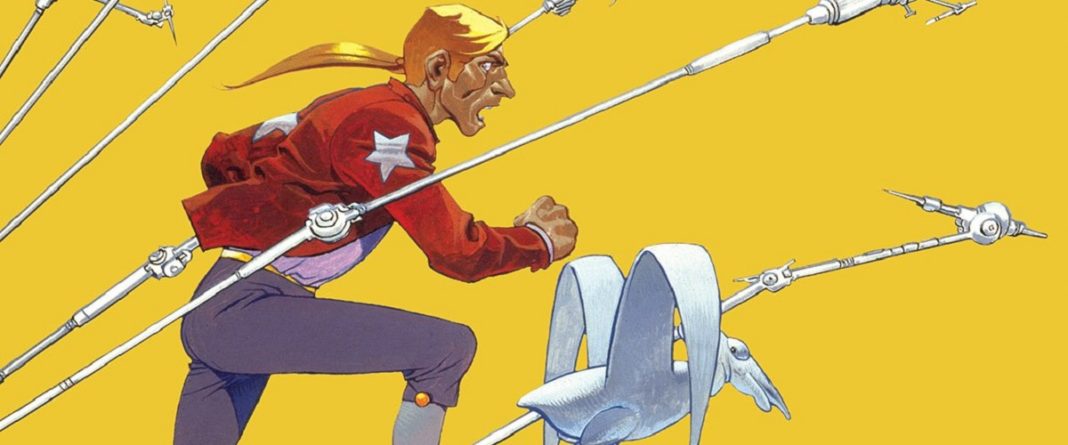
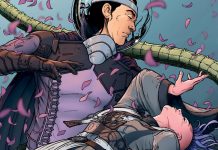

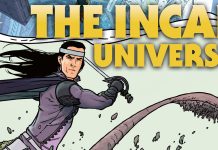


It’s not a remake of Dune, you absolutely don’t need to see the documentary first, and Jodorowsky isn’t French but Chilean.
Ooh, nice review. Just when I was contemplating reading all three parts (I did read the first 3-4 books of the original Incal in Danish many years ago). Thanks for the tip with the reading order.
You should definitely check out the metabarons, and probably other Moebius work as well, like the airtight garage, the Major Grubert stories, well worth the read.
Comments are closed.